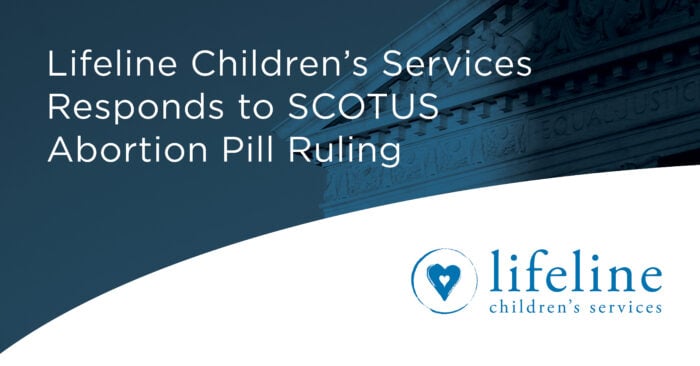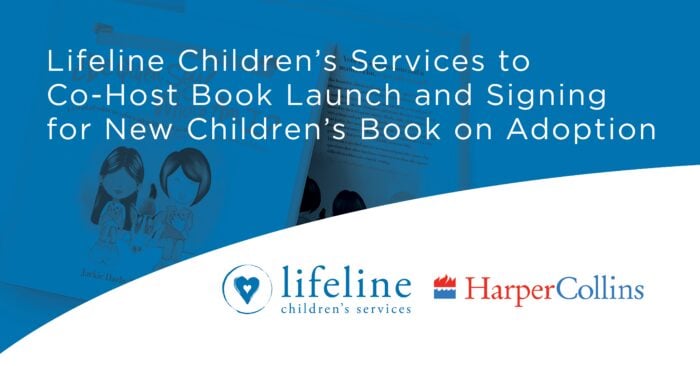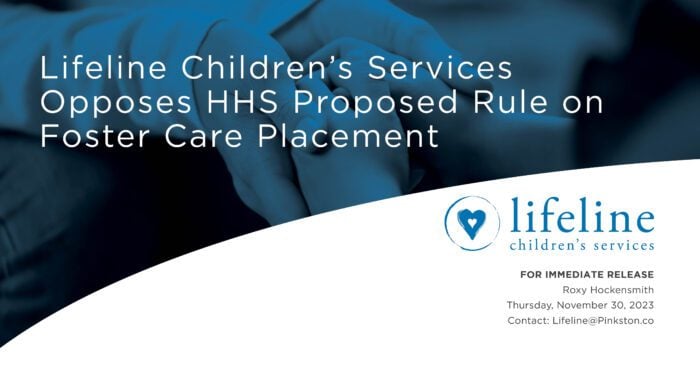Self-Harm is a term that may cause foster or adoptive parents’ anxiety level to go up. We hope this information will better equip you as a parent to feel pre-pared and capable to respond appropriately to this behavior. Let’s begin by de-fining what the term actually means.
WHAT IS SELF-HARM?
Self-harm, or self-injury, is the act of deliberately harming the surface of one’s own body, such as cutting or burning one’s self. This is typically not meant as a suicide attempt. Rather, this type of self-injury is an unhealthy way of coping with emotional pain or seeking control in a new or unfamiliar environment. The behavior of self-harm indicates a lack of appropriate coping skills. Self-harm can become a cycle or habit. Shame and guilt can lead to intense negative feelings, and these feelings in turn can contribute to a child or adolescent harming themselves. Although life-threatening injuries are usually not intended, self-injury can increase the possibility of more serious and even fatal self-aggressive behaviors or actions.
EXAMPLES OF SELF-HARM:
- Cutting (cuts or severe scratches with a sharp object)
- Scratching
- Burning (with lit match, cigarettes, or hot and sharp objects such as knives)
- Branding (carving words or symbols on the skin)
- Hitting or punching
- Piercing the skin with sharp objects
- Pulling out hair
- Persistently picking at or interfering with wound healing
- Extreme injuries (that can even result in broken bones)
- Intentionally running into things
- Psychological self-destruction: acting in emotionally or socially defeating ways, such as sabotaging closeness and trust, or setting oneself up to lose rewards or privileges.
If your child does harm themselves in less intentional or lethal ways, such as head-banging when upset, then you may want to look at the Connecting Point on “self-soothing.” While self-harm can be a way of soothing one’s self, children displaying these milder behaviors do not typically have the same intention to injure themselves as children with self-harm behaviors. The line between self-soothing behaviors and self-harm behaviors can often be blurred as it can be difficult to distinguish your child’s motives in behavior. We encourage you to be familiar with both topics.
WHY CHILDREN SELF-HARM:
After reading the list above , you may wonder why a child would desire to harm themselves in these ways. The con-cept of self-harm can seem rather foreign to us. Below are reasons children use self-harm as coping mechanisms:
- Unsure how to deal with emotions: For example, a child who has experienced trauma or neglect may feel “numb” to emotions, not knowing how to cope with or process them. These children might cause themselves pain in order to feel something more “real” and replace the emotional numbness.
- Unmet neurochemical needs: Children who do not receive physical touch (hugging, rocking or holding) early in life may have alterations in their neurochemistry, which induces decreased levels of serotonin and increased lev-els of cortisol. Self-injurious behavior can release endorphins in the body, which can raise mood and lead to a euphoric-like response.
- Difficult pregnancy and early hospitalization: A mother’s own stress hormones washing over the child in utero, along with any drug and alcohol exposure, can increase the likelihood that a child will have difficulty self-regulating and coping with trauma, stress, or difficult emotions.
HOW TO RESPOND TO SELF-HARM:
Be proactive, rather than reactive, by strengthening a child’s internal resources. One of the best ways to respond to self-harm is to encourage secure attachment and safe relationships. Along with a myriad of other benefits, secure attachment facilitates self-regulation. A healing family environment can repair prior damage as well as encourage growth and development. A parent’s relationship with their child is the pathway to change and healing.
While self-harm does not necessarily indicate suicidal ideation, it should always indicate to parents and professionals that the child is experiencing emotional pain and intervention is required. Self-injury can increase the risk of suicidal ideation because of the emotional problems that trigger self-injury. The pattern of damaging the body in times of dis-tress can make suicide more likely. For this reason, it is important to find treatment for the underlying emotions. Par-ents may want to read our Connecting Point on suicidal ideation to learn more.
PRACTICAL REMINDERS AND SUGGESTIONS:
Parents should be aware of how they are managing their own feelings and emotions. If a parent is able to regulate their own feelings and properly validate the feelings of their child, the result will be a much more even tempered
family life. A parent who is easily drawn into drama, is highly anxious or reactive, and/or isn’t emotionally present for their children, creates an unstable environment for healthy expression of feelings. Do not make a child feel guilt or shame about their self-harm. If you feel that their self-harm is not an immediate risk and the child has not indicated any suicidal ideation, then do not rush into discouraging the child from self-harming until the child has learned healthi-er coping skills (often with the help of a counselor or therapist). Self-harm may be the only outlet or learned coping
- Difficult pregnancy and early hospitalization: A mother’s own stress hormones washing over the child in utero, along with any drug and alcohol exposure, can increase the likelihood that a child will have difficulty self-regulating and coping with trauma, stress, or difficult emotions.
- Attachment Disorders: Inconsistent relationships and care during key developmental years drastically affects how a child interprets and interacts with the world around them. Children without loving and supportive caregivers fail to learn the crucial life skill of self-regulation. Self-regulation is key to understanding and comforting oneself in times of distress. A child may self-harm in a response to a situation they do not feel equipped to manage because they have never been taught how to manage stress.
- Stress: Stress is a natural part of living, but too much stress is damaging, especially to the young and vulnerable brain. Humans have a built-in mechanism to deal with threatening situations called- the stress response. This auto-matic reaction is very useful when coping with short term challenges; however, when the stress response is activat-ed continually- as in abuse, neglect, or compromised attachment- it can lead to damage in the brain, body, and behavior of children. One of the most alarming results of chronic stress in children is their inability to control their emotions and behavior leading to aggressive and impulsive reactions (self-soothing, self-harm, suicide, etc.).
- Abuse and Neglect: Children and adolescents who have been abused, neglected, or who have witnessed violence in the home are at high risk for self-harm. The impact of these experiences is profound on children and amplifies their distrust of others. Even if they do not have a working memory of the incidents, they all too often have “body memory.” Trauma remains locked in their bodies, as they react in hypersensitive and hypervigilant ways towards their surroundings. This places the child in a constant state of stress, anxiety, and hyper-alertness.
- Trauma: Children who have not been given tools to help cope with issues from their past may be more prone to self- harm as a need to feel in control or release deep emotional pain. Self-harming behaviors, understood as un-healthy coping skills, serve as a form of self-medication in order to calm themselves down or to rev themselves up in attempt to make oneself feel better. It can be helpful for parents and professionals to understand that self-harm can be a form of a child’s body speaking for them…the body says for the child or teen what they cannot allow themselves to say in words. This is especially true when we consider adoptees and children in foster care that may have difficulties with communication.
PRACTICAL REMINDERS AND SUGGESTIONS CONTINUED:
skill that they have. If a child is asked to stop self-harming before they have developed healthier coping skills, then the child may actually experience an increase in negative emotions and this could increase the chance of suicidal ideation.
If you notice severe self-harm that indicates a possible suicide attempt, please take action immediately and call 911. If you are not sure, contact a counselor or mental health professional for guidance.
- Validate their feelings: First empathize with the child’s difficult feelings. We all desire to be understood and chil-dren who are in crisis need even more understanding.
- Teach child to identify and appropriately express their feelings: Children’s stories, puppets, feelings charts, and role playing are all tools parents can utilize to help children learn about and identify their feelings.
- Teach child to communicate and share their thoughts and daily experiences: Remain genuinely curious—show your child through genuine interest that you want to know who they are, what they think, and what struggles they face by asking simple questions (not probing or interrogating) with a playful, curious attitude. You want to gradually teach your child to be more open about their thoughts and daily experiences to build your relationship.
- Teach child appropriate coping skills: Help them to try different coping skills and find a few that work for them. Examples of coping skills include drawing, journaling, exercising, reading a book, praying, coloring, going outside, talking with a friend, etc.
- Have the child evaluated for sensory issues: Seek out an evaluation from an Occupational Therapist who is ex-perienced and knowledgeable about sensory issues and needs.
- Help child improve their relational and social skills: Help them connect with peers (church, sports teams, music groups, etc.) Model how to be empathetic and kind to others. Read books or watch movies and talk about the relationships they observed. Practice role playing social situations.
- Build child’s self-image and confidence: Praise often! Help them find activities that they enjoy. Provide a safe place where they can try new things and gain confidence.
- Seek counseling: Counseling can help a child identify and manage underlying issues that trigger self-injurious behavior, learn skills to better manage distress, learn how to regulate emotions and develop healthy problem-solving skills. Parents may benefit from counseling as well.
- Create a safe environment in the home: Remove any objects that could be used to harm oneself from the child’s room and place in either a public spot in the house or keep away from the child’s reach. You may also need to keep typical household objects such as kitchen knives, medicine, cleaners, etc. in a safe, locked location.
- Create a “safety plan” with your child or adolescent: Create a plan for what to do when they have the desire or urge to self-harm. This may include people they can call to help them remain safe and coping skills they can use when they feel the desire to self-harm. Consult your caseworker on how to develop a safety plan.
CONCLUSION:
Parents and professionals need to understand their child’s desire or need to self- harm and attempt to address the underlying need or fear behind this behavior. They also need to help their child find new ways of coping. Self-harming behaviors will likely decrease over time if parents are preventative, focus on building attachment and trust, and pro-vide their child with the resources they need (counseling, sensory therapy, etc).
Developed by: Megan Davis
References: Cohen, M. Adoption and Suicide Risk. Retrieved from http://www.attachmentandtraumaspecialists.com/articles/adoptionandsuiciderisk; Forbes, H.T. (2008). Beyond Consequences, Logic, and Control: A Love Based Approach to Helping Children with Severe Behaviors. Boulder, CO: Beyond Consequences Institute.; Forbes, H.T. (2009). Dare to Love: The Art of Merging Science and Love into Parenting Children with Difficult Behaviors. Boulder, CO: Beyond Consequences Institute.; Gindis, B. (2012, April). Post-Orphanage Behavior in Internationally Adopted Children.



